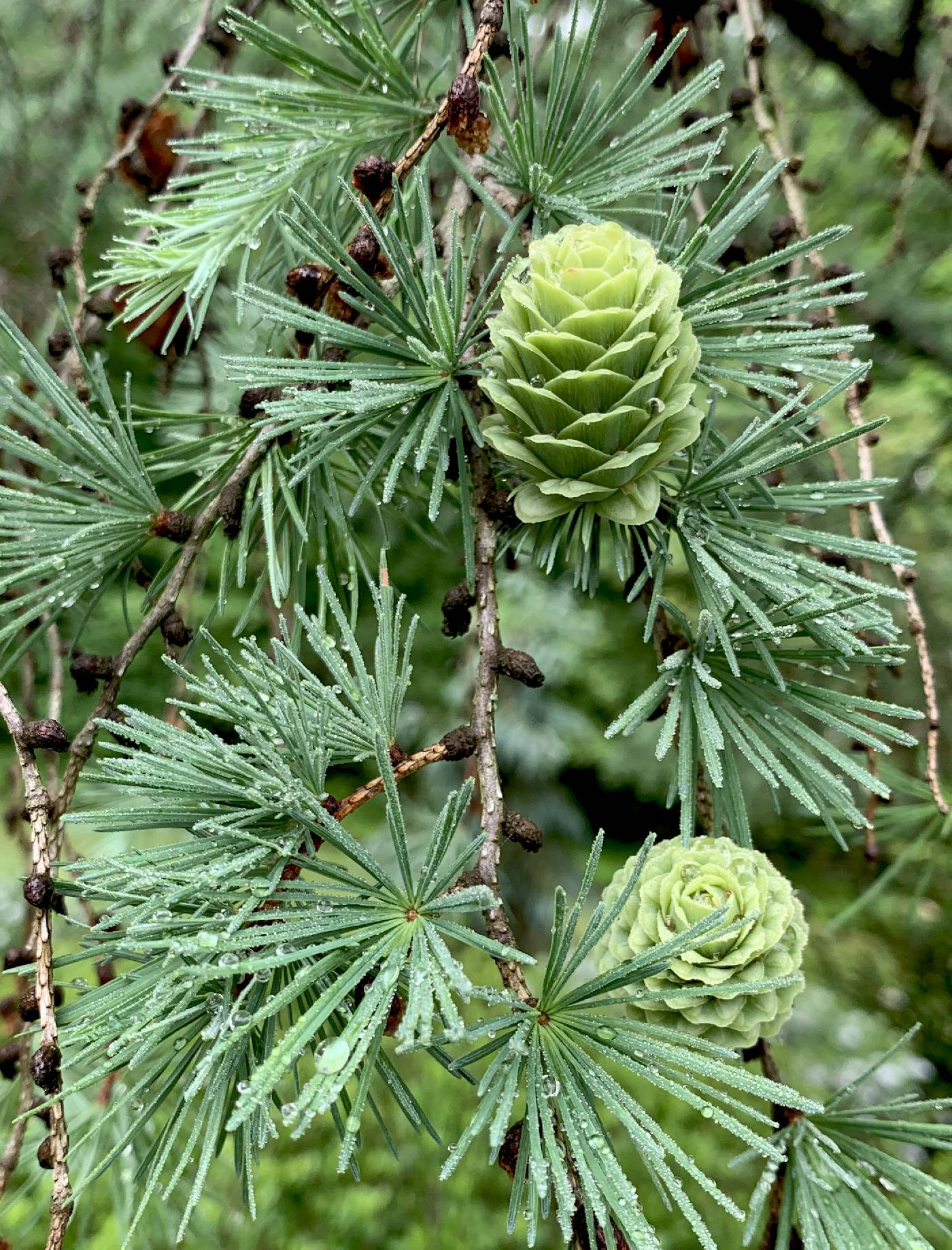Larix
|
Family: Pinaceae |
Trees deciduous; crown sparse, open. Bark silver-gray to gray-brown on young trees, becoming reddish brown to brown, smooth initially, scaly to thickened and furrowed with age. Branches whorled; short (spur) shoots prominent on twigs 2 years or more old, each bearing leaves (needles), and often pollen cone, or seed cone; lateral long shoots (sylleptic branches) sometimes produced by current-year growth increments; leaf scars many. Buds rounded. Leaves in tufts of 10--60 on short (spur) shoots or borne singly on 1st-year long shoots, deciduous, ± flattened, with abaxial keel, sessile, base decurrent, sheath absent, apex pointed or rounded; resin canals 2. Pollen cones solitary, ovoid-cylindric, yellowish. Seed cones maturing in 1 season, persisting several years, erect, globose to ovoid, usually terminal on short shoots and thus appearing stalked, sometimes sessile on 1-year-old long shoots; scales persistent, circular to oblong-obovate, thin, lacking apophysis and umbo; bracts included or exserted. Seeds winged; cotyledons 4--6. x =12. Species of Larix are present in most boreal regions; they often form only a minor component of the vegetation. Some are important for their hard, heavy, and decay-resistant wood. Only a few have received any horticultural attention; some cultivars exist for the most commonly cultivated Old World larches, L . decidua Miller and L . kaempferi (Lambert) Carrière, but almost none for the North American species.
Male and female cones sessile or subsessile on leafless dwarf branches of previous year's growth, globose or subglobose; lvs deciduous, needle-like; branches of 2 sorts, (1) long shoots of the current year, with scattered lvs, and (2) dwarf branches produced laterally on the previous year's growth, slowly elongating for many years and producing crowded clusters of numerous lvs. 10, mainly N. Temp. Gleason, Henry A. & Cronquist, Arthur J. 1991. Manual of vascular plants of northeastern United States and adjacent Canada. lxxv + 910 pp. ©The New York Botanical Garden. All rights reserved. Used by permission. |

